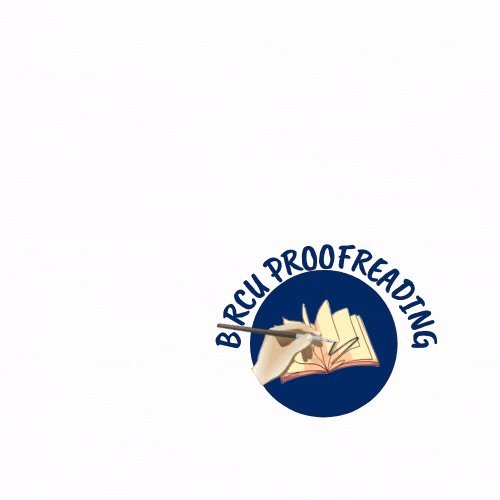Survival Strategy of Family Companies in the Cake and Bakery Industry in Semarang City
Abstract
This study aims to reveal the strategy of family companies in the cake & bakery industry so that they can survive by identifying key strategic factors that determine the survival ability of cake & bakery industry business people. The next stage is to describe the phenomena, data and facts in order to develop a strategic model that explains the relationship between the factors that play a role in business management, competitive ability and realize the growth and development of the cake & bakery industry business from these business actors. This study uses a qualitative approach. The scope of research on cake & bakery industry players in the city of Semarang and its surroundings. There are 27 research partners / informants in the study consisting of owners and management teams of cake & bakery industry players, informants from industrial suppliers and their minded customers. Research data collection was carried out by observation, in-depth interview techniques, data review of available documents, validation by triangulation, compiling interview transcripts, presenting interview extracts, formulating categories, compiling propositions and presenting mini theoretical models based on research findings. The results show that the survival strategy of cake & bakery business people can only be built with the vision and mission that is internalized and realized in business operations, on business performance. Business performance in this industry is shown by growth and development: Profit margin, sales turnover, outlets, customers, product variants, and bad stock are getting lower. Optimal business performance can only be achieved with competitive advantage on the basis of excellence factors which include aspects: Taste, Price, Product Variants, Location of outlets, Entrepreneurship Orientation and Innovation on: product, marketing, process and organizational. Besides that, the role of suppliers and customers is also very strategic for the survival of this industry.
Keywords
Full Text:
PDFReferences
Arbawa, Delta Lexi & Wardoyo, Paulus (2016), Competitive Advantage: Influence on Marketing Performance, Thesis Journal of Master of Management Program, Semarang University
Arif, S. (2019). Influence of Leadership, Organizational Culture, Work Motivation, and Job Satisfaction of Performance Principles of Senior High School in Medan City. Budapest International Research and Critics Institute-Journal (BIRCI-Journal). P. 239-254
Barney, Jay (1991), Firm Resources & Sustained Competitive Advantage. Journal of Management.
Ciptono. W. S, (2006), A Sequential Model Of Innovation Strategy-Company NonFinancial Performance Links, Gajah Mada International journal of Business, 8, 2, pp. 137-178
Daellenchbach, S. Ursh., Anne M McCarthy, Timorthy S. Schoenecker (1999), Commitment to Innovation: The Impact of Top Management Team Characteristic, R&D Management, 29.3, pp. 693-716
Dwanto, Wawan; et al. (2012). Family preneurship: Family Business Concept, Alfabeta Publishers, Bandung
Febriatmoko, Bogy & Rahardjo, Totok ( 2018 ), Improving Business Performance Through Competitive Advantage Of Semarang Typical Culinary, Research Journal of Diponegoro University Semarang, 2018
Ferdinand, Augusty (2014). Management Research Methods , Research Guidelines for Writing Thesis, Thesis and Dissertation of Management Science, Publishing Agency Diponegoro University.Semarang
Grant, RM (1991). “The Resource-Based Theory of Competitive Advantage: Implications for Strategy Formulation.” California Management Review 33(3): pp.114-135.
Handoko, T Hani (2012 ), Management, Publishing Agency, Faculty of Economics UGM, ed. 2 2012.
Heryjanto, Andreas (2013 ), Business Mitosis – Lunpia Semarang's Third Generation Strategy for Maintaining Business Sustainability, SWCU Publisher
Ihalauw, John JOI (2016 ), From Business Reality To Mini Theory – A step-by-step guide, Tisara Graphic Salatiga.
Jeaning. Peter., Graham Beaver (1997 ), The Performance and Competitive Advantege of Small Firms: A Management Persfective, International Small Business journal, 15, 2, pp. 63-75
Mirasaputri, C Mega (2017 ), Factors Affecting the Development of Small Business in the Manufacturing Sector in Malang City, Research Journal, JIBEKA Volume 11 No. February 2, 2017.
Niati, D. R., Siregar, Z. M. E., & Prayoga, Y. (2021). The Effect of Training on Work Performance and Career Development: The Role of Motivation as Intervening Variable. Budapest International Research and Critics Institute (BIRCI-Journal): Humanities and Social Sciences, 4(2), 2385–2393. https://doi.org/10.33258/birci.v4i2.1940
Nurcahyo, R Jati (2015), The Relation of Vision, Mission and Values to Employee and Company Performance, Journal of Khasanah Ilmu, Vol. 6 N0. 2 Y 2015.
Pardi, Suharyono, Suryadi Imam, Arifin Zainal (2014), The Effect of Market Orientations and Entrepreneurial Orientation toward learning Orientation, Innovation, Competitive Advantages and Marketing Performance, European Journal of Business and Management, Vol.6 No, 21 Th 2014.
Pelham, M. Alfred, David T. Wilson (1996), A Longitudinal Study of The Impact of Market Structure, Firm Structure, Strategy, and Market Orientation Culture on Dimensions of Small Firms Performance, Journal of the Academy of Marketing Science. 24, 1, pp. 27-43
Pierce II, John A, Robinson Jr, Richard B (2014) Strategic Management, Formulation, Implementation and Control (Strategic Management – Formulation, Implementation and Control), Salemba Empat, Jakarta 2014.
Porter, Michael E & Maulana, Agus (1989), Competitive Strategy, Techniques for Analyzing Industry and Competitors, PT. Gelora Aksara Pratama, Jakarta 1989
Porter, Michael E (1993) Competitive Advantage, Creating and Maintaining Superior Performance, Erlangga Publisher, Jakarta 1993.
Prakosa, Bagas (2005), “The Influence of Market Orientation, Innovation and Learning Orientation on Company Performance To Achieving Competitive Advantage (Empirical Study on the Manufacturing Industry in Semarang)”, Journal of Management and Organization Studies, Vol.2, No.1
Prameswari, Elysia (2011 ). Background of Bakery Business, Scientific Journal, taken from http://www.scribd,com/doc/49456585/Latar.usaha-bakery .
Purwanti, Endang (2012 ), The Influence of Entrepreneurial Characteristics, Business Capital, Marketing Strategy on the Development of MSMEs in Salatiga, Journal Among Makati, Vol. 5 N0. 9 July 2012.
Rahardjo, H. Mudjia, Research on Islamic Education Management, A Methodological Search, accessed with permission on the web: repository.uin-malang.ac.id/1573/1/1573.pdf
Rahmadi, Rifky Agung (2012 ) Culinary Business Opportunities, Journal of Information Atmajaya Yogyakarta, 2012.
Susanto, AB. (2005) World Class Family Business. Quantum, Jakarta.
Susanto, AB; Himawan, W; Patricia, S; and Mertosono, S. (2007). The Jakarta Consulting Group On Family Business. Div. Publishing The Jakarta Consulting Group, Jakarta.
Suyono, Eko ( 2014 ), The Influence of the External Business Environment, Strategy Formulation and internal control on Company Performance, Research Journal of Jenderal Sudirman University, 2014.
Tidd, Joseph & Besant, J (2009), Managing Innovations Integrating Technological, market and Organizational Change (4.th. Ed) the atrium, Southern Gate, Chichester, England : Jhon Wiley and Sons.
Umar, Husein (2010 ) Design for Strategic Management Research, Rajawali Pers, Jakarta July 2010.
Vanany, Iwan (2002), Choice of Leading Strategies for Small and Medium Manufacturing Industries (IMKM) ( Case Study: Several IMKM Companies in East Java), Usahawan, No. 07 TH XXXI July
Wardi, Yunia (2017), Entrepreneurship Orientation on the Performance of Small and Medium Enterprises (SMEs) West Sumatra, Journal of Technology Management, Vol. 16 N0.1 Yr. 2017.
Wibowo, Amin, 2008, “The Impact of Organizational Culture and Internal Corporate Governance on Organizational Performance In Indonesian Companies”, Ph. D. Curtin University of Technology, Graduate School of Business
Wicklund, J. (1999). “The Sustainability of The Entrepreneur Orientation Performance Relationship” Entrepreneurship Theory in Practice, Fall: pp.37-55
Wida Purwidianti (2015), The Influence of Internal and External Factors on the Performance of Small and Medium Enterprises in North Purwokerto, Scientific Journal, KINERJA, Volume 19 No. 1 year 2015.
Widodo (2011) Improving Organizational Performance Through Strategic Planning, Research Journal, Business Strategy, Sultan Agung Islamic University Semarang, Vol. 15 No. January 1, 2011
Wiklund, J., & Dean Shepherd, 2005, “Entrepreneurial Orientation and Small Business Performance: A Configurational Approach”, Journal of Business Venturing, Vol.20, No.1
Wright, P, Kroll, M, Pray, B, Lado, A. (1995). “Strategic Orientations, Competitive Advantage and Business Performance.” Journal of Business Research” Vol 33: pp.143-151.
DOI: https://doi.org/10.33258/birci.v5i3.6289
Article Metrics
Abstract view : 153 timesPDF - 77 times
Refbacks
- There are currently no refbacks.

This work is licensed under a Creative Commons Attribution-ShareAlike 4.0 International License.

This work is licensed under a Creative Commons Attribution-ShareAlike 4.0 International License.

_.gif)

















_.gif)



